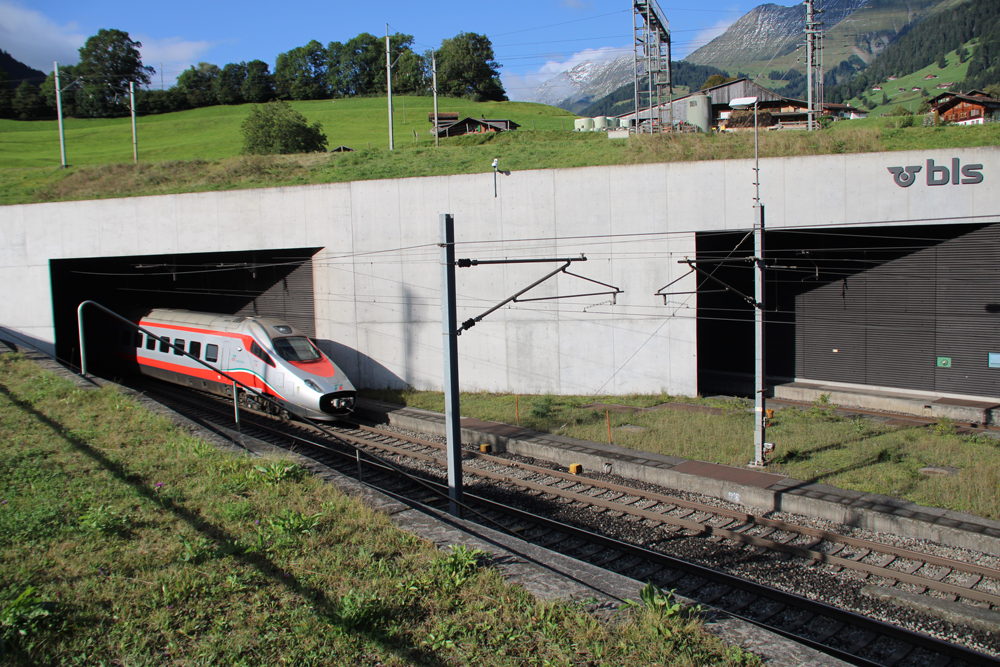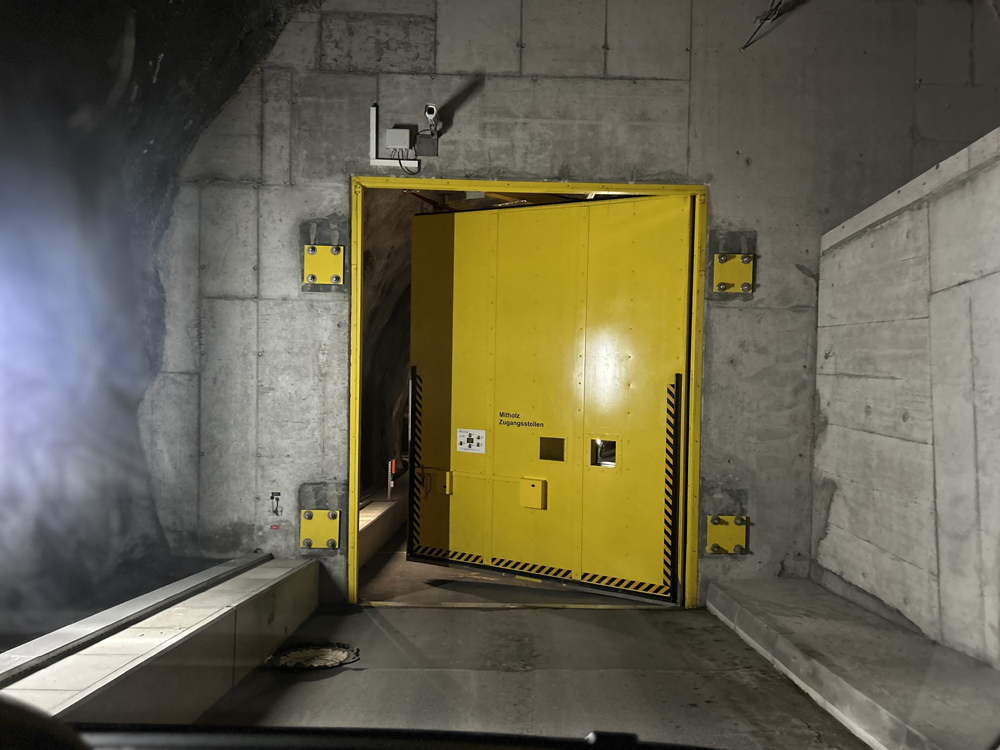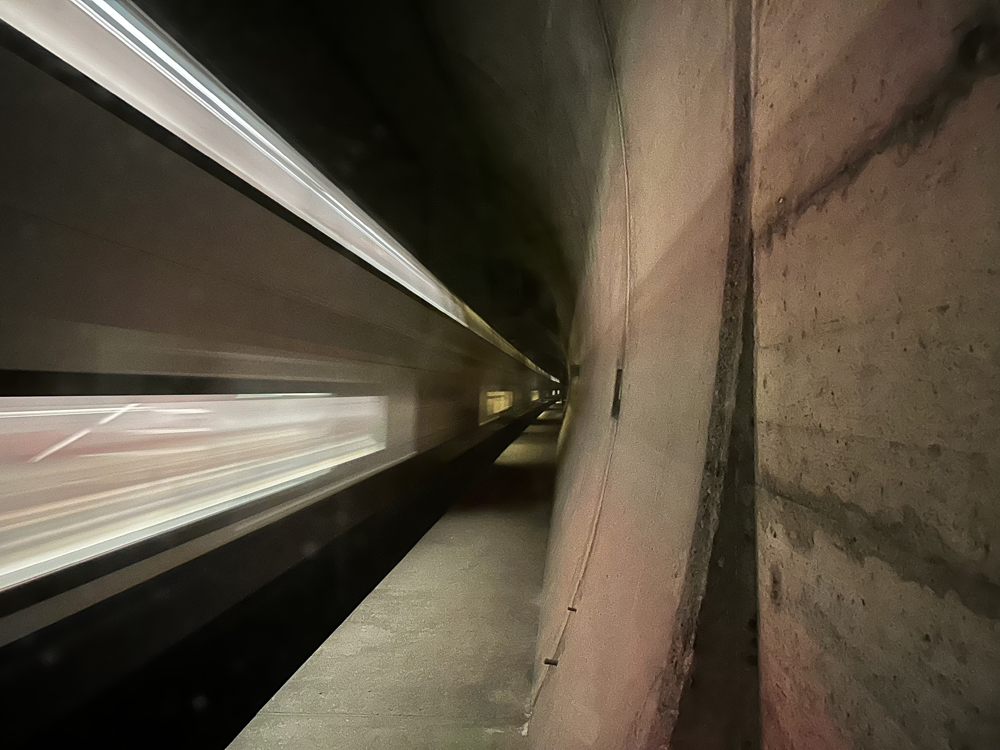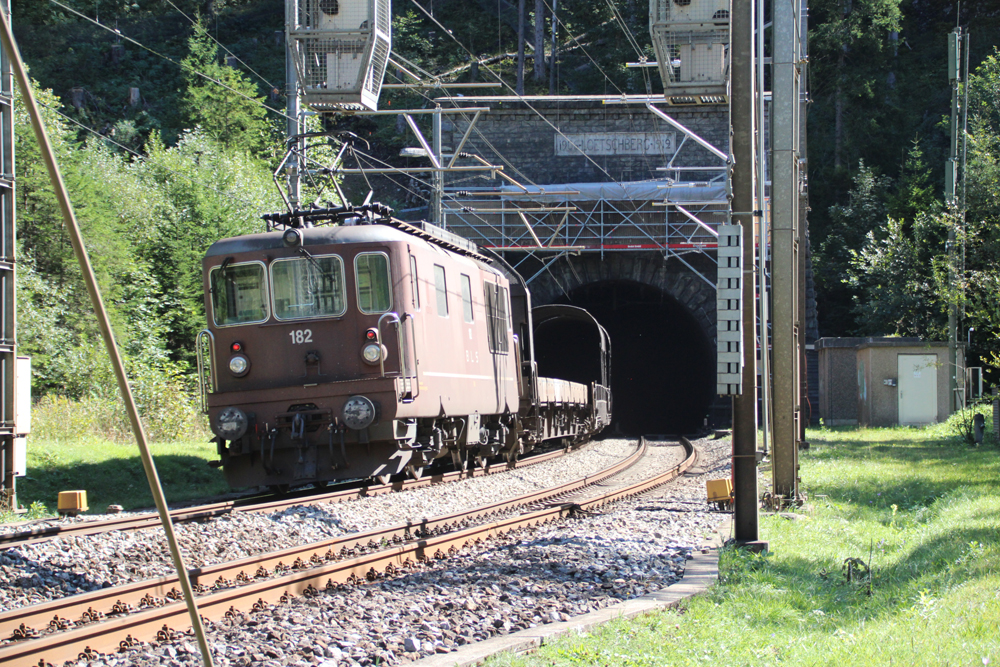
SPIEZ, Switzerland — At the midpoint of this busy Swiss trip, I have — for the time being — moved on from working on my article on the Rhätische Bahn to work for an article on the long-delayed plans to complete the Lötschberg Base Tunnel, another of the massive rail infrastructure projects that help define Swiss railroading.
As part of that work, today I spent more than three hours receiving a guided tour of portions of the 34.6-kilometer (21.5-mile) tunnel between Frutigen and Raron. What’s interesting about this tunnel is that while it opened in 2007, it is far from the complete two-track tunnel originally envisioned. About 14 kilometers at the south end are double; another 14 kilometers are single track, but the bore for the second track has been completed; and for the northern 7 kilometers, there is only a single bore.
The Swiss government has, however, finally approved the 1.7 billion Swiss francs (about $2.01 billion) needed to complete a full two-track tunnel. For a variety of reasons, it will be about two years before the major work begins, but some preparatory work has already begun.
It was fascinating to visit the tunnel and drive into that second, uncompleted bore at Mitholz, the location where it ends. There are miles of tunneling that have nothing to do with the actual rail tunnel itself to allow for access, emergency evacuations, and other functions — the 34.6-kilometer tunnel actually requires 88 kilometers of tunneling, according to my host and guide, Willi Frauenfelder. [A retired BLS engineer, he developed many of the tests for the railroad’s locomotives and drivers.] Among other details: because the tunnel is slightly pressurized — a move involved in preventing the spread of smoke or fire if someone needs to be evacuated from one tunnel to either the other rail tunnel or, where two tracks do not exists, the adjacent access tunnels — we had to drive through and wait in a set of airlocks before a steep downhill drive to the tunnel.

My chance to visit the tunnel was rare, but by no means unprecedented: BLS, the railway that operates the tunnel and, through a subsidiary, oversaw its construction, does offer group tunnel tours by appointment. I d think my group of one was somewhat out of the ordinary, though. As a result, there are a number of displays explaining the process at Mitholz, as well as a cross-section of how the tunnel is constructed. All of this will be torn out when the second bore is put into service, but it was hardly just a cosmetic expense; the display area has also been used for testing and experimentation.
I look forward to telling you more about this project, but for now, suffice to say, it is complex and fascinating. And the payoff is immense: When completed, the tunnel’s capacity will jump from 110 trains a day to 280.

Other activity
Since I last checked in, I spent a couple of days further exploring the RhB, riding areas I hadn’t previously visited and stopping in some for photos. (Small disaster: a memory card malfunction appears to have eaten one day’s photos that showed heavy early snow in the Alps. I am hopeful this can be salvaged when I get home.)
I also spent one day around the original Lötschberg Tunnel, which dates to 1913 and still sees passenger and freight operation. It also is the home of a highly active auto transport service through that 14.6-kilometer (9.07-mile) tunnel; Willi told me that on its best days, the auto trains have moved up to 10,000 vehicles, with trains operating as often as every 7 minutes.

Beyond that, my two days here in Spiez have been something of a mid-trip reset. Monday, I made a trip to Interlaken to do laundry. (Laundromats exist in Switzerland only for tourists — and therefore only in the largest or most touristy cities. And they are and are horribly expensive: To wash and dry two loads cost a total of 44 Swiss francs, or about $52.) The laundry excursion ended up taking 5 1/2 hours, of which only 45 minutes was travel by train; the rest would be worth a blog post of its own … but this isn’t Laundry-dot-com, so I we’ll pass on those details. However, I should note that the train I took to Interlaken happened to be the GoldenPass Express, where there was room in the second-class coach that BLS adds as a connection between its locomotive and the regular MOB train set. The classiest 22-minute train ride I will ever take. As for today, it’s this blog post, repacking, and at least starting on my expense reports.
Tomorrow, I move onto the third feature subject of my trip. But I’ll tell you about that later.









